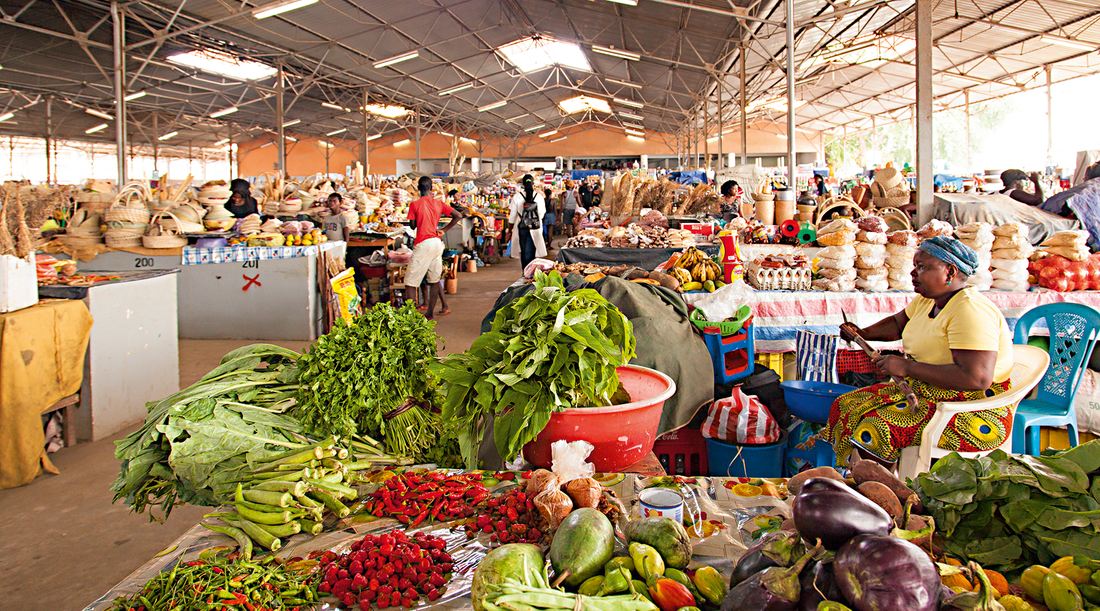
São Paulo Market - Among Aromas, Colours, Flavours and Knowhow
Share
Life starts early in the busy market of São Paulo, in Luanda. Men and women arrive from all over, bringing with them carts loaded with an array of products, in a feast of flavours, colours and aromas. They come to set up in one of the best known and most well organised markets in Angola. Vegetables, meat, herbs, eggs, clothing, pots and pans, candles and countless other objects begin to fill the stalls.

One of the most common products at São Paulo market is the famous gindungo chilli pepper, the spicy berry often used in the Angolan cuisine to flavour sauces, fish and meats. Of varying sizes, shapes and even colours, the introduction of the gindungo in Angolan cuisine is due to influences from the East and to the chilli peppers brought from America by Portuguese navigators.

Indeed influences of other continents are clear to see in Angolan cuisine. Moreover, throughout all of African cuisine, as this has never been an isolated continent. Asian white rice, for example, replaced African red rice in the diet of Angolans. Mangos, breadfruit, sugar cane, ginger and black pepper, all products that can be found in São Paulo market, are also products that originated in countries in the far east. As for the Americas, Angola owes products such as cassava, beans, tomatoes, corn, peanuts, potatoes and papayas to these continents. These products, brought from different destinations, are now complemented with typically Angolan produce, such as sorghum, millet, cowpeas, lentils, yams, okra, watermelon, tamarind and baobab fruit, which result in juices, ice creams, soups and stews.

In addition to these foods helping to satisfy hunger, many of them are also used for curing diseases and ailments. Indeed, it is not uncommon to find sellers who are also healers in São Paulo market and in other markets of Luanda, people who have accumulated traditional knowhow, inherited from parents and grandparents, and who know by heart the benefits and uses of each of the products that they have to sell.

Borotutu, a kind of root that is orange on the inside, is one of the products on sale in São Paulo and that can be used to prevent and even cure some diseases, especially of the liver, the healers believe, proving the history of traditional medicine in Angola. Highly detoxifying and purifying, this root can treat diseases including hepatitis and jaundice. It is further recognised in the treatment of diseases of the stomach, liver, gallbladder, spleen, and urinary tract, with its purifying properties ensuring blood fluidity, fighting cholesterol and normalising blood pressure. A product that thus reveals its incredible uses.

Don’t go thinking however that borututu is the only ingredient in São Paulo market to boast these characteristics. In actual fact, just a short chat with local vendors reveals that there is no shortage of products with medicinal properties here. A knowledge that has survived the centuries and is still widely used, not only because medication is still lacking, but in particular because of the fact that these products have proven benefits. To find out about them all, just sit down and talk with the vendors of this market of scents, tastes and knowhow and allow yourself to become wrapped up in this culture of multiple sensations.

Text: Andreia Barros Ferreira
Photography: Manuel Teixeira
